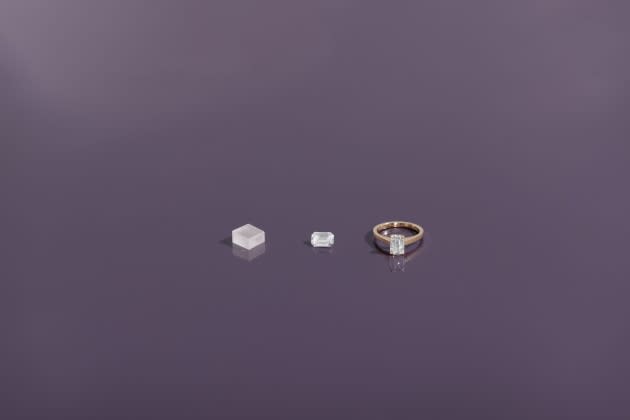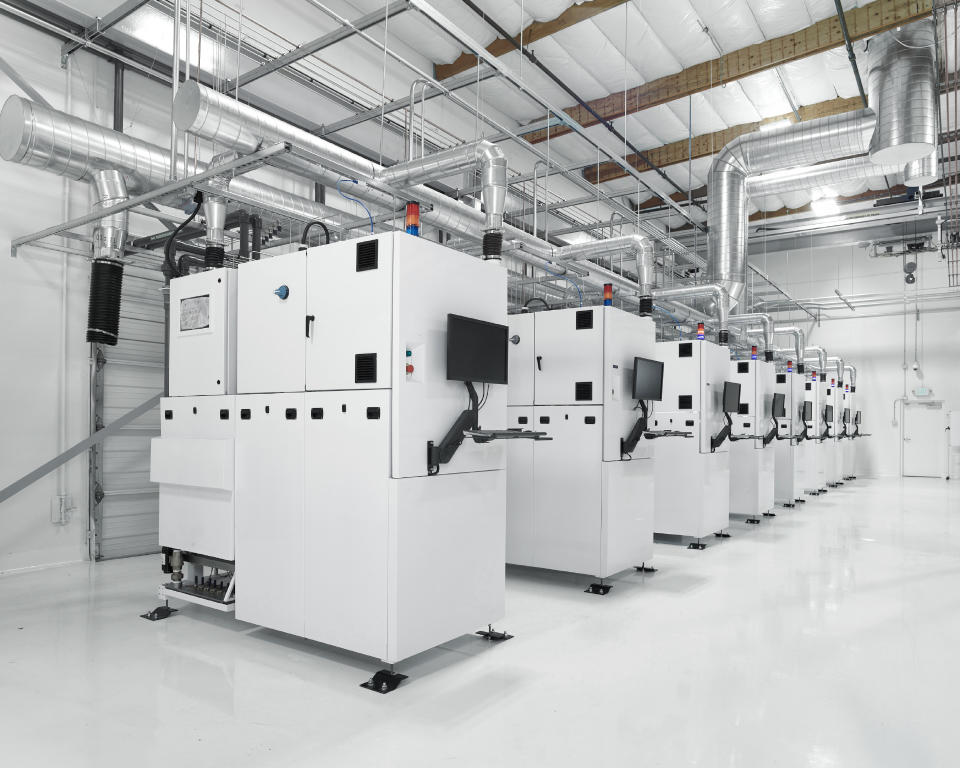Vrai Wants Clients to Customize Every Detail of Their Lab-grown Diamond

Lab-grown diamond brand Vrai is ripping a page out of the Savile Row rulebook with plans to launch a bespoke diamond service that will allow customers to pick the cut and polish of their own rocks and watch them come to life in four to six weeks’ time.
Vrai is the international retail arm of the Diamond Foundry in San Francisco, which produces, cuts and polishes diamonds with zero carbon emissions.
More from WWD
Dior Hosts Dinner in Celebration of Judy Chicago's New Show in London
How Conserving Beauty Is Pioneering Water-free Cosmetics That Support Conservation Efforts
While Vrai has worked on special bespoke diamond projects in the past — making jewelry in collaboration with Jony Ive, Marc Newson, Dover Street Market, Balmain and Givenchy — this is the first time the brand will offer its wider pool of customers the chance to create their own diamonds.
When the service launches later this month, customers will be able to choose their rough diamond, and pick from 31 shapes, ranging from antique to modern cuts including Emerald, Pear, Radiant and heart-shaped Brilliant.
Vrai’s teams then carry out “cut planning,” using software to analyze each block of rough and look for inclusions. They’ll later determine a plan to optimize the yield in order to make the diamonds as bright and shiny as possible, similar to what cutters and polishers would do with a mined diamond.
In a video interview from Los Angeles, where Vrai is based, chief executive officer Mona Akhavi said the industry is changing quickly; demand for lab-grown diamonds is on the rise, and the cost of doing business is less than it was even a few years ago, factors which have allowed Vrai to launch its bespoke service to a wider audience.
Over the past three years, she added, the Diamond Foundry has doubled production, and sales. It produces up to 3 million carats of diamonds a year.
That figure is set to grow with the opening of a new 740 million euro foundry in Trujillo, Spain, in 2025.
Of late, the San Francisco foundry has also been working more efficiently, producing larger, cleaner, rough blocks, which has enabled Vrai to offer the new bespoke service at a price of $1,400 per carat.
Akhavi claimed that at that rate, a 5-carat diamond ring from Vrai will cost 20 percent less than a mined diamond from a traditional jeweler.
Vrai also guarantees an “I” grade diamond, which is near colorless to the naked eye. Vrai also guarantees that if the final polished diamond is of a higher color grade than an “I,” there is no additional cost.
Vrai’s diamonds are cut and polished at workshops internationally, with the company updating customers weekly, with video and imagery of the process.
Akhavi said Vrai is launching the service due to customer demand.
“Our customers have been asking us for many years ‘Can I have my own diamond cut?’ ‘How can I get what Gwen Stefani got, or the diamonds you did for Jony Ive and Marc Newson?’” she said, adding, “We’re now able to bring all the efficiencies we gained over the years to every customer at a reasonable cost.”
Akhavi said cost efficiencies also come from cutting out the mined diamond industry’s middlemen, who handle the rocks as much as 15 times (adding costs along the way) before they reach the customer.
The new bespoke diamond service is set to become a major part of Vrai’s business, according to Akhavi.
She said customers increasingly want transparency, and to be involved in the process of creation.
“They’re asking for larger sizes, and a variety of shapes and options. They also want customization. Customers today are used to getting exactly what they want,” she said.

Then there is the price advantage. “You can now buy a tennis bracelet from us — nine carats in total — for a quarter of the price of a mined diamond version — and you don’t have to feel bad about,” harming the environment, Akhavi contended.
Asked about other trends she’s seeing in the lab-grown diamond market, Akhavi said people are increasingly aware of lab-grown diamonds and their impact on the environment. Producing lab-grown diamonds can require a significant amount of energy.
The Diamond Foundry works with proprietary plasma reactors which are powered by renewable hydropower to ensure the process is carbon neutral.
Vrai claimed that for every diamond carat produced in the foundry, it saves 143 pounds of CO2 and 2,011 ounces of air pollution compared to a mined diamond. The company claims that since 2018, it has saved more than 1.5 million pounds of CO2, equivalent to 440 flights from New York to London.
She said the spend is growing, too, with Vrai customers opting for higher diamond weights, especially in the U.S. and Europe. “People are feeling very comfortable about upgrading their carat size because of the price advantage,” she said.
The average carat size at Vrai is two, but Akhavi said this past Valentine’s Day in the U.S., the brand were seeing increasing demand for 4-carat rocks.
Overall demand for lab-grown diamonds is on the upswing. According to Paul Ziminsky Diamond Analytics, the lab-grown diamond market accounts for more than 11 percent of the diamond jewelry market overall.
According to other studies, the bulk of that demand is coming from Gen Z and Millennial customers, who are unimpressed with the mined diamonds their parents and grandparents wore, and continue to wear.
Whereas older generations were wooed by powerful marketing campaigns, younger customers are asking questions about supply chain and prefer to put their money behind a rock with low impact on the environment.
Vrai, which counts Leonardo DiCaprio, star of the 2006 film “Blood Diamond,” as one of its investors, is riding the lab-grown momentum, and it’s not stopping at bespoke.
After a string of high-profile collaborations, the company plans to launch a signature Vrai jewelry line in June.
Akhavi said that after so many years of scaling the business, improving the technology and collaborating with creatives, “2023 is the year to truly differentiate” in terms of product and service, she said.
Best of WWD


